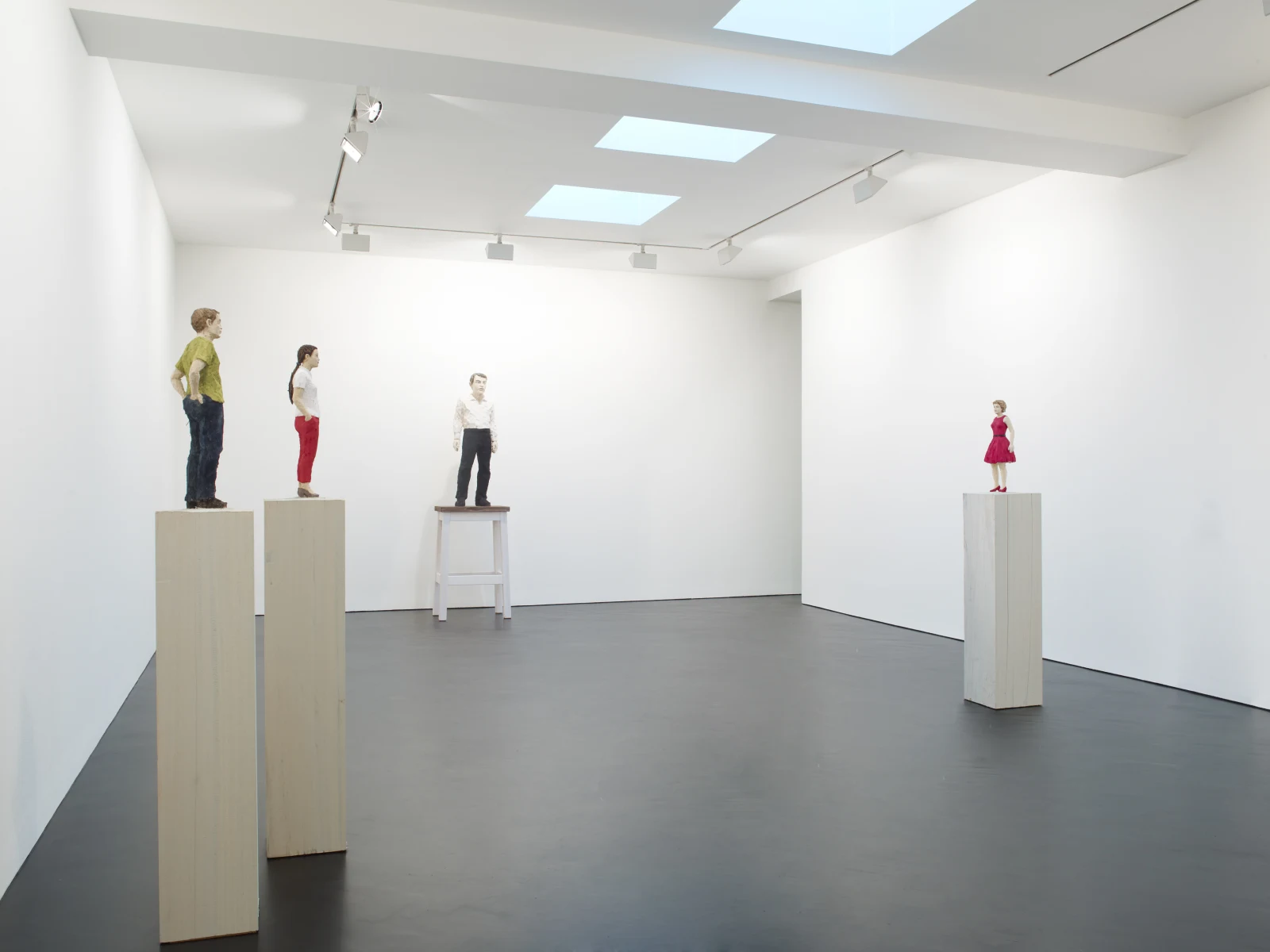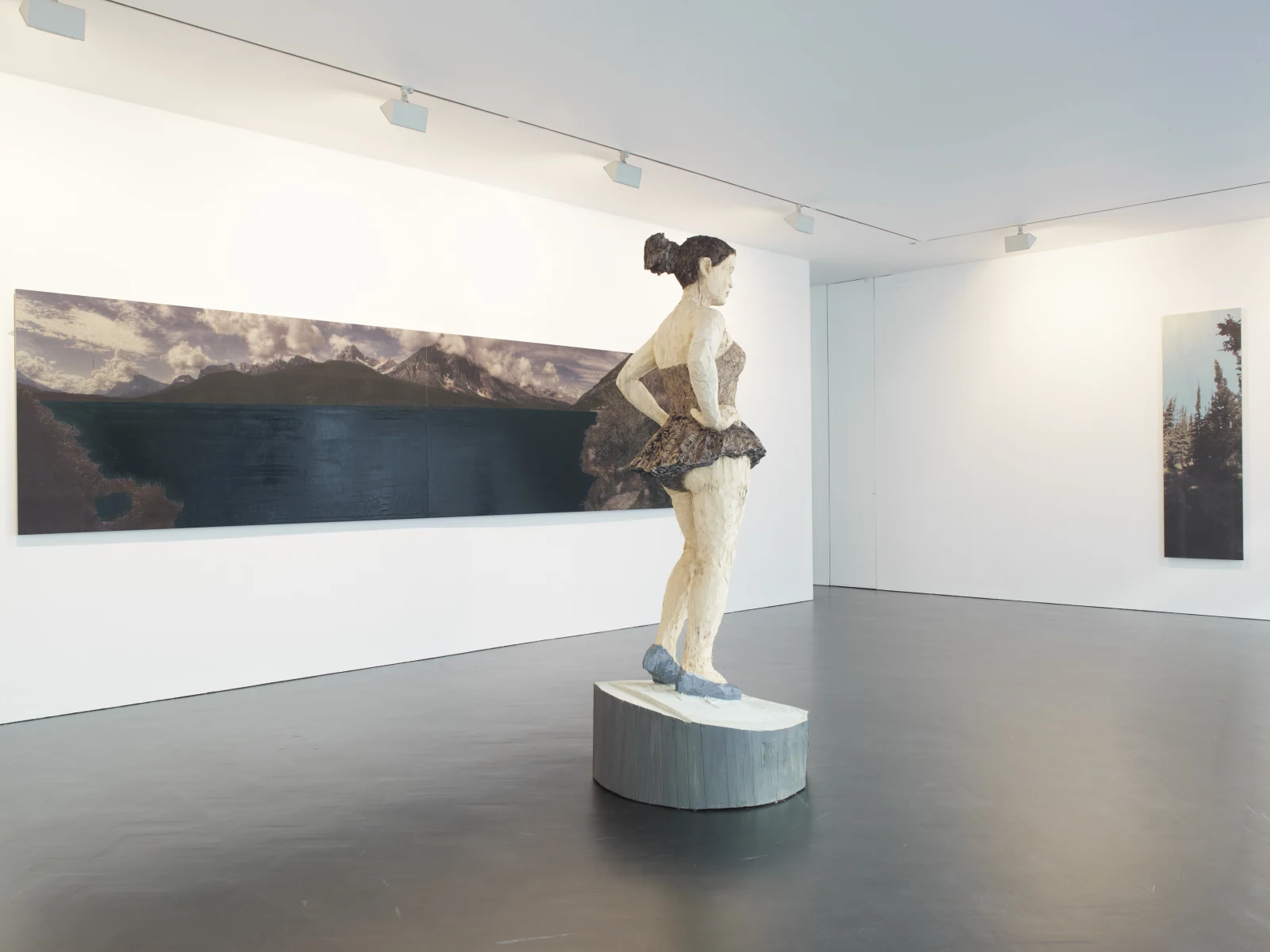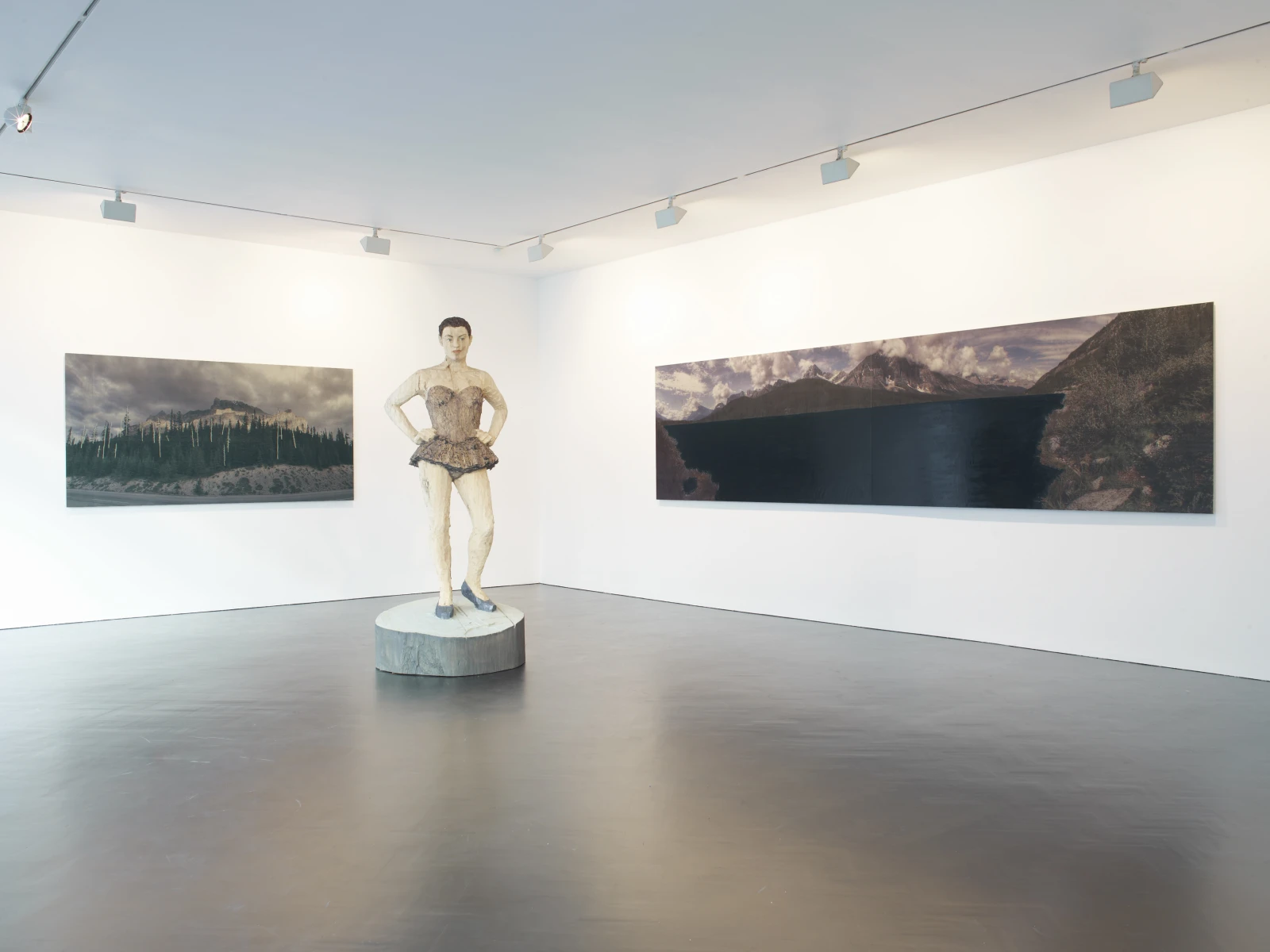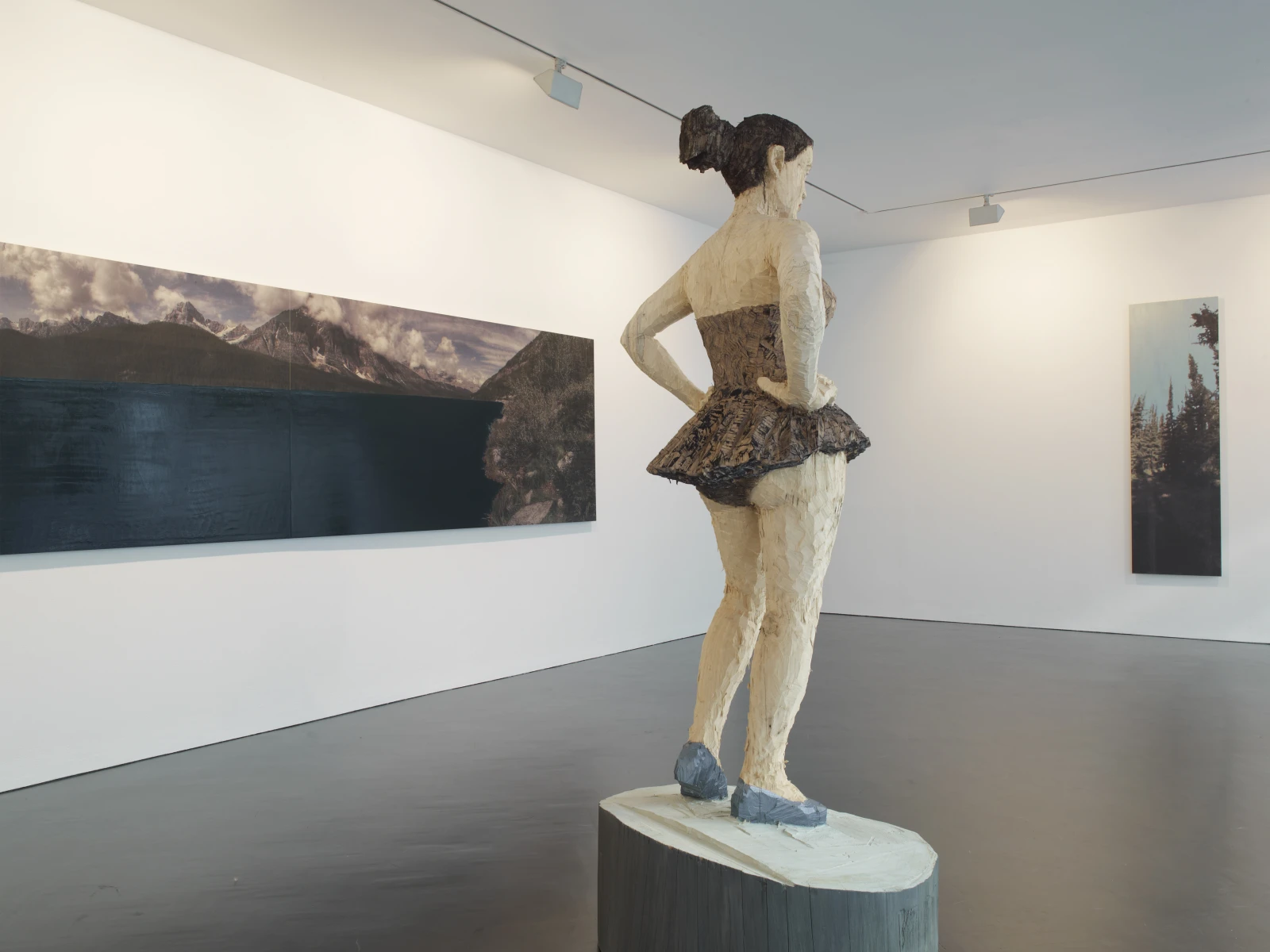
Stephan Balkenhol
Overview
Balkenhol, when shrinking the scale of his works, playfully disrupts the history of figurative sculpture by subverting the monumentality so often associated with it.
Stephen Friedman Gallery is delighted to present an exhibition of new work by German artist Stephan Balkenhol. This is the artist’s eighth exhibition at the gallery and follows his recently unveiled monument to Richard Wagner in Leipzig and an installation at St Elizabeth Church, Kassel, to coincide with Documenta 13.
Continuing his devotion to exploring the role of the figure in contemporary art, the exhibition combines an oversized ballerina figure, a series of wooden screens, adorned with Balkenhol’s photographic prints, plus a selection of figurative column works and reliefs.
Stephen Friedman Gallery is delighted to present an exhibition of new work by German artist Stephan Balkenhol. This is the artist’s eighth exhibition at the gallery and follows his recently unveiled monument to Richard Wagner in Leipzig and an installation at St Elizabeth Church, Kassel, to coincide with Documenta 13. Continuing his devotion to exploring the role of the figure in contemporary art, the exhibition combines an oversized ballerina figure, a series of wooden screens, adorned with Balkenhol’s photographic prints, plus a selection of figurative column works and reliefs.
The front room contains a series of new wall-mounted works on board. Inspired by a recent trip to Canada, Balkenhol has printed his own digitally altered photographs of the epic landscape of British Columbia directly onto the wooden surface. He has disturbed the original image by painting or carving into the printed background, enhancing the atmospheric quality created by the view of this vast, unpopulated landscape. These bold areas of colour and incision contrast with the muted tone and palette of image behind. The installation is completed by a large ballerina figure, carved from a single block of wawa wood, removed from the imagery behind by the nature of her pose, costume and physical standing. Balkenhol has subverted the landscapes, placing a strong figure from another place entirely in amongst the barren scenery.
The back gallery spaces feature a series of smaller sculptures, both single columns and two part works with panels and stools, plus wall-mounted reliefs. These pieces continue Balkenhol's commitment to figurative expression . Though still expressive, each work proudly displays the rough, chiselled and hand-painted surface upon which the artist has worked yet the proportions of the figure are precisely coordinated. Each man or woman wears the same unpretentious, indifferent expression which acts as vessel for the viewer's emotional projection, described by the artist as being a 'wooden mirror'. These works are grouped together yet somehow separate; one sculpture gazes on another while that objects affection lies elsewhere.
Balkenhol is renowned for his technical prowess in depicting the human figure through the medium of hand-carved poplar or wawa wood. He creates these sculptures from a single block, often combining the anonymous subjects with tall columns. Each work proudly displays the rough, chiselled and hand-painted surface upon which the artist has worked yet the proportions of the figure are precisely coordinated, frozen in unpretentious, emotionless poses. A semblance of the Minimalist tradition still resides in the calm, understated beauty of these works, trends the artist was exposed to whilst attending the Hamburg School of Fine Arts from 1976–82. His tutors there included Nam June Paik and Sigmar Polke who both profoundly affected his subsequent artistic practice.
Balkenhol, when shrinking the scale of his works, playfully disrupts the history of figurative sculpture by subverting the monumentality so often associated with it. Furthermore, his figures emanate timelessness through the simple, plain-coloured clothing and the confident yet unassuming poses of the everyday man or woman; the open expressions align with any state of mind, emotion or situation.
Balkenhol, when shrinking the scale of his works, playfully disrupts the history of figurative sculpture by subverting the monumentality so often associated with it.






